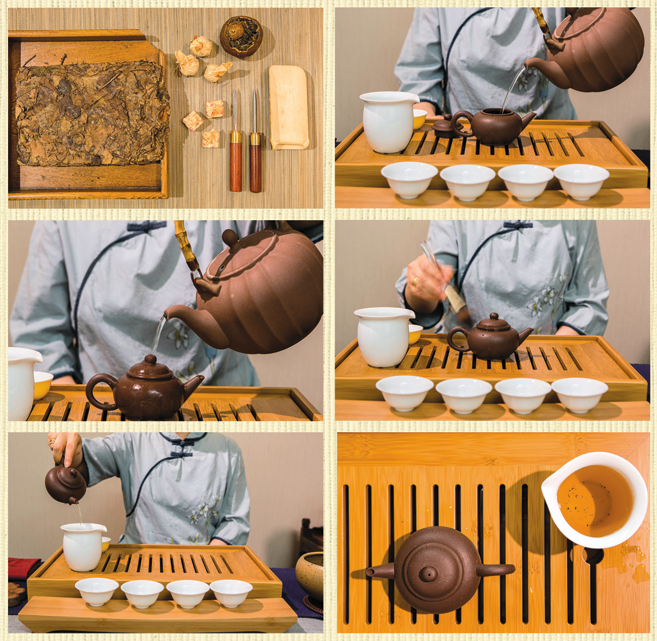Chinese Tea Ceremony
Traditional Chinese tea is made from whole tea leaves, either rolled when green or compressed into cakes. Teapots are often unglazed, and so can acquire tea flavors, which is seen as beneficial to the taste of the tea.
The tea ceremony is both practical and ceremonial. The empty pot is first warmed with hot water, then emptied.
Loose tea—scooped with a bamboo scoop, never metal—is placed in the teapot, and the pot filled with hot water, to loosen the rolled or compressed tea leaves. In less than a minute, that first water is discarded. This is an opportunity to examine and smell the tea leaves in the pot and note the aromas.
The next pour of hot water becomes the first steeping of tea. Hot water is poured over the teapot, and brushed over it, to keep an even temperature within the pot. The slotted tea tray catches the water.
Because the tea first poured from the pot will taste differently from that poured from the bottom, the tea is decanted into a pitcher, and not poured directly into the cups.
The tea is sipped slowly and consciously. After the cup is emptied, it is smelled again and the aromas noted again. The process is repeated through several steepings. The flavors and aromas change and develop with each steeping.
Click on the image below to download a PDF of the entire Tea Ceremony page to print.







